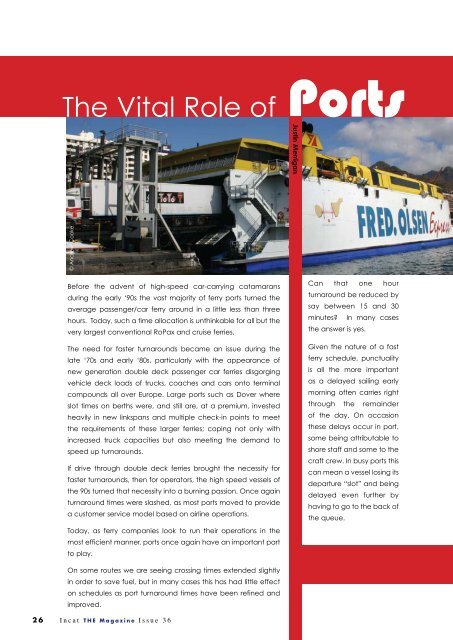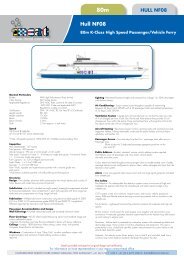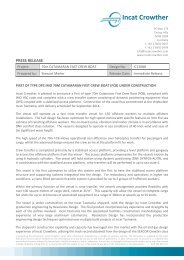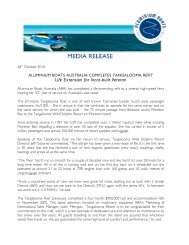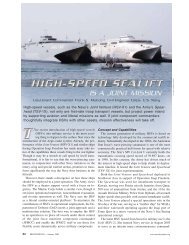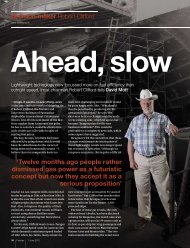US NAVY'S - Incat
US NAVY'S - Incat
US NAVY'S - Incat
You also want an ePaper? Increase the reach of your titles
YUMPU automatically turns print PDFs into web optimized ePapers that Google loves.
The Vital Role of Ports<br />
Justin Merrigan<br />
© Andrew Cooke<br />
Before the advent of high-speed car-carrying catamarans<br />
during the early ‘90s the vast majority of ferry ports turned the<br />
average passenger/car ferry around in a little less than three<br />
hours. Today, such a time allocation is unthinkable for all but the<br />
very largest conventional RoPax and cruise ferries.<br />
The need for faster turnarounds became an issue during the<br />
late ‘70s and early ‘80s, particularly with the appearance of<br />
new generation double deck passenger car ferries disgorging<br />
vehicle deck loads of trucks, coaches and cars onto terminal<br />
compounds all over Europe. Large ports such as Dover where<br />
slot times on berths were, and still are, at a premium, invested<br />
heavily in new linkspans and multiple check-in points to meet<br />
the requirements of these larger ferries; coping not only with<br />
increased truck capacities but also meeting the demand to<br />
speed up turnarounds.<br />
If drive through double deck ferries brought the necessity for<br />
faster turnarounds, then for operators, the high speed vessels of<br />
the 90s turned that necessity into a burning passion. Once again<br />
turnaround times were slashed, as most ports moved to provide<br />
a customer service model based on airline operations.<br />
Today, as ferry companies look to run their operations in the<br />
most efficient manner, ports once again have an important part<br />
to play.<br />
Can that one hour<br />
turnaround be reduced by<br />
say between 15 and 30<br />
minutes In many cases<br />
the answer is yes.<br />
Given the nature of a fast<br />
ferry schedule, punctuality<br />
is all the more important<br />
as a delayed sailing early<br />
morning often carries right<br />
through the remainder<br />
of the day. On occasion<br />
these delays occur in port,<br />
some being attributable to<br />
shore staff and some to the<br />
craft crew. In busy ports this<br />
can mean a vessel losing its<br />
departure “slot” and being<br />
delayed even further by<br />
having to go to the back of<br />
the queue.<br />
On some routes we are seeing crossing times extended slightly<br />
in order to save fuel, but in many cases this has had little effect<br />
on schedules as port turnaround times have been refined and<br />
improved.<br />
26 <strong>Incat</strong> THE Magazine Issue 36


